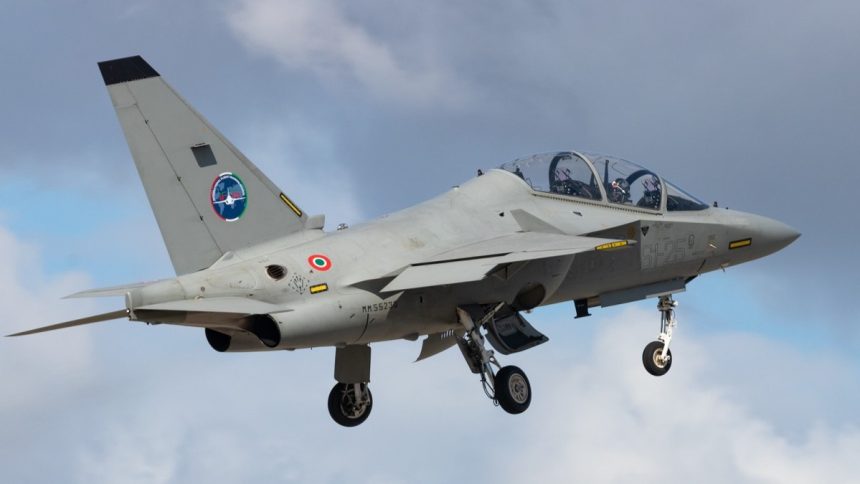For the first time the U.S. Air Force has chosen a foreign school to train its pilots, with the first 10 students arriving soon in Italy.
The Italian Air Force and the U.S. Air Force announced a historic agreement, which will see for the first time in history U.S. student pilots trained in a foreign school belonging to a NATO Ally. The school chosen by the American service is the International Flight Training School (IFTS) at Decimomannu Air Base, in Sardinia, Italy.
The agreement, called the “Concept of Operations (CONOPS) for Flight Training of the USAF Military Personnel in Italy,” was signed separately on Aug. 22, 2025, by the Chief of Staff of the Italian Air Force, Lieutenant General Antonio Conserva, and Lieutenant General Brian S. Robinson, Commander of the U.S. Air Force Air Education & Training Command.
According to the press release, the IFTS was chosen for its proven excellence and ability to offer an innovative and challenging training program. The Leonardo T-346A jet trainer, which has also been a candidate for the USAF’s T-38 replacement, has been defined as a further strength behind this agreement.
The two services worked together on the development of training program, structured around the “Multiphase Jet Training Integrated Syllabus,” which will allow students to earn their Military Pilot License on the T-346A in approximately nine months. Ten U.S. students will arrive soon at Decimomannu to start their training.
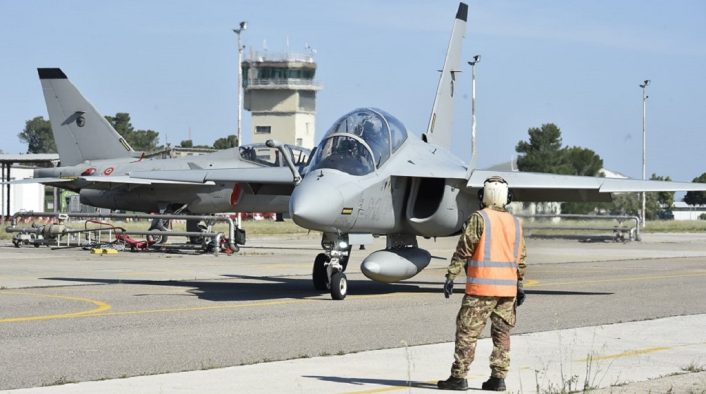
U.S. delegation visited multiple times the IFTS and the 61st Wing, and officials were impressed after being shown the characteristics of T-346 advanced trainer. Also, in the past, USAF instructor have been assigned to the school, although it is unclear if new instructors will be part of the agreement too.
International Flight Training School
The International Flight Training School project was announced in 2018 at the Farnborough Airshow, when the letter of intent was signed by the ItAF chief of staff and the CEO of Leonardo. Based at Decimomannu AB, the school covers the Phase IV training, or Lead-In Fighter Training, with the T-346A.
As part of the IFTS, the ItAF has the lead for the management of the operational requirements and of the operations, as well as the upkeep of the quality standards of the flight school. The ItAF is also in charge of the management of the training syllabus, the training of the instructors and the quality control of the exit level of the students.
Leonardo is in charge of the investments for the creation of the school with aircraft and simulators of the latest generation and new ground infrastructures, as well as the operations’ support with technicians that will side with the military personnel. The new campus in Decimomannu takes full advantage of the Sardinian training infrastructures already used for years by the Italian military.
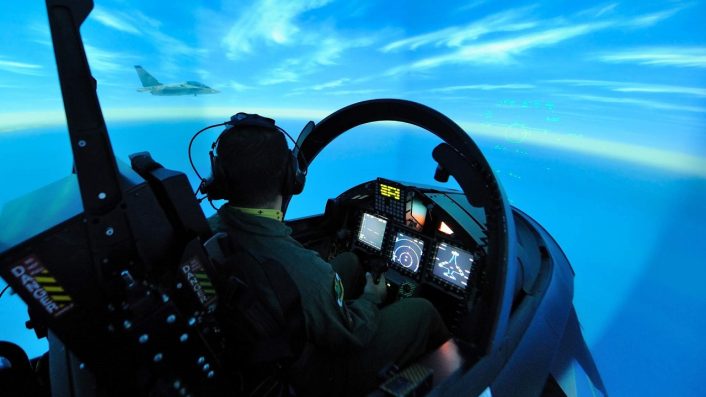
An entire building is dedicated to the Ground Based Training System (GBTS) facilities, with latest-generation simulation systems, inclusive of two Full Mission Simulators and three Part Task Trainer synthetic simulators for emergency management training modules and more advanced training missions, as well as classrooms and offices.
Leonardo and CAE, through the joint venture “Leonardo CAE Advanced Jet Training”, provide technical-logistic support to the International Flight Training School, including full maintenance and operation of the M-346 aircraft and its Ground-Based Training System, as well as operation of IFTS base facilities. The integrated support optimizes the management of fleets and simulators for maximum operability, including the advanced full-mission simulator jointly developed by Leonardo and CAE.
The IFTS has already become internationally renowned, throughout its first years of operations, as one of the most advanced and state-of-the-art flight schools for the training of future fighter jet pilots. The school is now an international reference for Advanced LIFT to better prepare pilots that will fly on front-line fighters of 4+ and 5th gen, like the Eurofighter Typhoon and the F-35.
The IFTS students are followed throughout their training by a team of 40 instructors, both military and civilian, while flying more than 8,000 flight hours per year on the M-346 Master and as many in the advanced flight simulators, for about a 1:1 ratio between real and simulated flight hours. The school exploits the ItAF’s extensive know-how in the training sector and the national industry’s excellence in the integrated training systems.
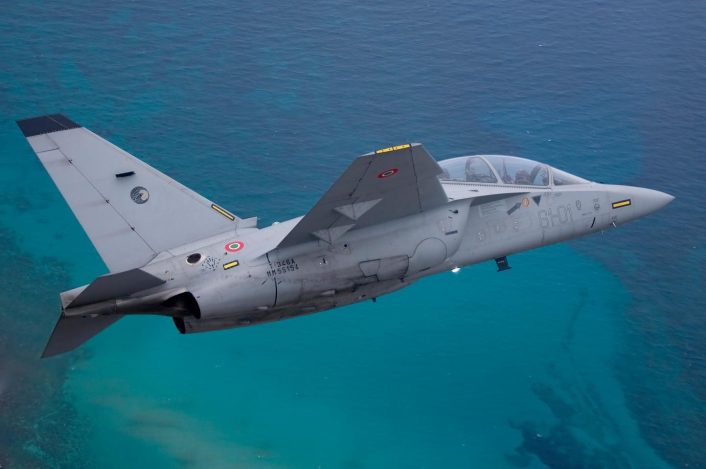
The Phase IV Lead In to Fighter Training
The Phase IV training of the Italian Air Force pilots is based on two pillars: the T-346A advanced training aircraft and its integrated training system, which allow students to conduct real and synthetic training missions in a joint manner, increasing the training value. Thanks to its features, it’s the ideal system to train future fighter pilots which are not only required to be good proficient pilots, but they also need to manage the entire weapon system, with all its sensors and weapons, in scenarios which are becoming increasingly more complex, less permissive and with plenty of threats.
The pilots are trained under the widely adopted “train as you fight” concept, to better prepare them for operational units. Today’s fighter pilots need to have first order management skills as right now the superiority against adversaries is obtained in the information domain, the fusion of the info from multiple domains and the reaction time. The modern LIFT training highly reflects these needs.
The syllabus developed for the Phase 4 heavily exploits the ground training segment of the M-346 to build these capabilities, with the live flights being the last step of the training and amounting to roughly 50% of the training events. The simulator training is so realistic that can be counted as real flight hours, without losing training effectiveness.
During these nine months of training, the pilots continue to expand the training blocks of the Specialized Pilot Training. In fact, during the Phase III, students are already exposed to Basic Fighter Maneuvers, Basic Air to Ground employment, Defensive Counter Air missions, Air-to-Air Refueling, as well as live fire range missions, in addition the standard contact, instrument, tactical formation training blocks.
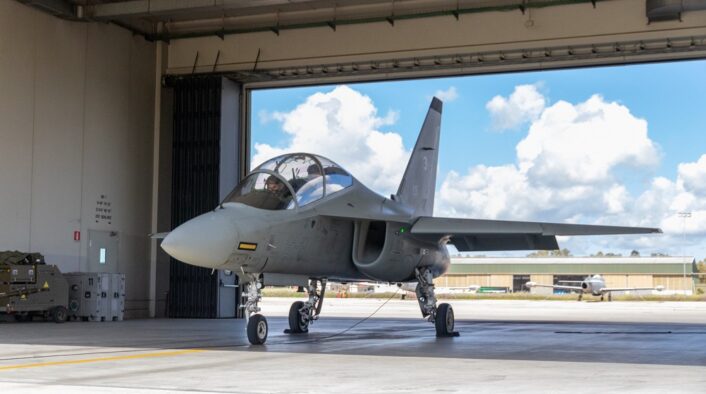
The LIFT training administered by the 212° Gruppo (Squadron) is highly modular, to better adapt to the needs of the air forces who train there. In fact, some countries do not require all modules for the training of their pilots, while Italian pilots are trained on the entire syllabus. Among the modules we find Advanced Air to Air, Advanced Air to Ground, Offensive Counter Air, Defensive Counter Air, Advanced Combat Maneuvers, Quick Reaction Alert, Air to Air Refueling and also an introduction to COMposite Air Operations.
An important element of the LIFT training is represented by the performance of the aircraft, which are very similar to the ones of 4th and 5th gen aircraft, making almost negligible the transition from the trainer to the final assigned aircraft. The entire Phase IV course includes a total of approximately 150 simulator and real flight training sessions, flown in all weather conditions, during day and night, with the aid of Helmet Mounted Displays and Night Vision Systems.
During this phase, students also have the opportunity to train in real-life shooting scenarios in dedicated training areas in Sardinia, giving them the ability to immediately test in the field the skills acquired. Decimomannu is, in fact, home to the AWTI (Air Weapons Training Installation), a fully integrated training installation with air-to-air and air-to-ground ranges as well as an EW (Electronic Warfare) range.

